+ Open data
Open data
- Basic information
Basic information
| Entry |  | |||||||||
|---|---|---|---|---|---|---|---|---|---|---|
| Title | Cryo-EM Structure of SST analogs bond SSTR1-Gi complex | |||||||||
 Map data Map data | ||||||||||
 Sample Sample |
| |||||||||
 Keywords Keywords | SSTR1 / SST analogs / MEMBRANE PROTEIN | |||||||||
| Function / homology |  Function and homology information Function and homology informationsomatostatin receptor activity / neuropeptide binding / glutamate receptor signaling pathway / response to starvation / forebrain development / G protein-coupled receptor signaling pathway, coupled to cyclic nucleotide second messenger / neuropeptide signaling pathway / adenylate cyclase inhibitor activity / positive regulation of protein localization to cell cortex / Adenylate cyclase inhibitory pathway ...somatostatin receptor activity / neuropeptide binding / glutamate receptor signaling pathway / response to starvation / forebrain development / G protein-coupled receptor signaling pathway, coupled to cyclic nucleotide second messenger / neuropeptide signaling pathway / adenylate cyclase inhibitor activity / positive regulation of protein localization to cell cortex / Adenylate cyclase inhibitory pathway / T cell migration / D2 dopamine receptor binding / response to prostaglandin E / adenylate cyclase regulator activity / G protein-coupled serotonin receptor binding / adenylate cyclase-inhibiting serotonin receptor signaling pathway / cellular response to forskolin / regulation of mitotic spindle organization / Peptide ligand-binding receptors / cerebellum development / cellular response to leukemia inhibitory factor / Regulation of insulin secretion / cellular response to estradiol stimulus / positive regulation of cholesterol biosynthetic process / negative regulation of insulin secretion / G protein-coupled receptor binding / response to peptide hormone / adenylate cyclase-inhibiting G protein-coupled receptor signaling pathway / adenylate cyclase-modulating G protein-coupled receptor signaling pathway / G-protein beta/gamma-subunit complex binding / centriolar satellite / Olfactory Signaling Pathway / Activation of the phototransduction cascade / G beta:gamma signalling through PLC beta / Presynaptic function of Kainate receptors / Thromboxane signalling through TP receptor / G protein-coupled acetylcholine receptor signaling pathway / G-protein activation / Activation of G protein gated Potassium channels / Inhibition of voltage gated Ca2+ channels via Gbeta/gamma subunits / Prostacyclin signalling through prostacyclin receptor / G beta:gamma signalling through CDC42 / Glucagon signaling in metabolic regulation / G beta:gamma signalling through BTK / Synthesis, secretion, and inactivation of Glucagon-like Peptide-1 (GLP-1) / ADP signalling through P2Y purinoceptor 12 / photoreceptor disc membrane / Sensory perception of sweet, bitter, and umami (glutamate) taste / Glucagon-type ligand receptors / Adrenaline,noradrenaline inhibits insulin secretion / Vasopressin regulates renal water homeostasis via Aquaporins / GDP binding / Glucagon-like Peptide-1 (GLP1) regulates insulin secretion / G alpha (z) signalling events / cellular response to catecholamine stimulus / ADP signalling through P2Y purinoceptor 1 / ADORA2B mediated anti-inflammatory cytokines production / G beta:gamma signalling through PI3Kgamma / Cooperation of PDCL (PhLP1) and TRiC/CCT in G-protein beta folding / adenylate cyclase-activating dopamine receptor signaling pathway / GPER1 signaling / cellular response to prostaglandin E stimulus / Inactivation, recovery and regulation of the phototransduction cascade / G-protein beta-subunit binding / heterotrimeric G-protein complex / G alpha (12/13) signalling events / sensory perception of taste / extracellular vesicle / signaling receptor complex adaptor activity / Thrombin signalling through proteinase activated receptors (PARs) / retina development in camera-type eye / G protein activity / GTPase binding / Ca2+ pathway / fibroblast proliferation / midbody / High laminar flow shear stress activates signaling by PIEZO1 and PECAM1:CDH5:KDR in endothelial cells / cell cortex / spermatogenesis / G alpha (i) signalling events / G alpha (s) signalling events / phospholipase C-activating G protein-coupled receptor signaling pathway / G alpha (q) signalling events / Hydrolases; Acting on acid anhydrides; Acting on GTP to facilitate cellular and subcellular movement / Ras protein signal transduction / Extra-nuclear estrogen signaling / cell population proliferation / neuron projection / ciliary basal body / G protein-coupled receptor signaling pathway / negative regulation of cell population proliferation / lysosomal membrane / cell division / GTPase activity / synapse / centrosome / GTP binding / protein-containing complex binding / nucleolus / magnesium ion binding Similarity search - Function | |||||||||
| Biological species |  Homo sapiens (human) / synthetic construct (others) Homo sapiens (human) / synthetic construct (others) | |||||||||
| Method | single particle reconstruction / cryo EM / Resolution: 3.37 Å | |||||||||
 Authors Authors | Wong TS / Zeng ZC / Xiong TT / Gan SY / Du Y | |||||||||
| Funding support | 1 items
| |||||||||
 Citation Citation |  Journal: Acta Pharm Sin B / Year: 2025 Journal: Acta Pharm Sin B / Year: 2025Title: Structural insights into the binding modes of lanreotide and pasireotide with somatostatin receptor 1. Authors: Zicheng Zeng / Qiwen Liao / Shiyi Gan / Xinyu Li / Tiantian Xiong / Lezhi Xu / Dan Li / Yunlu Jiang / Jing Chen / Richard Ye / Yang Du / Thiansze Wong /   Abstract: Somatostatin receptor 1 (SSTR1) is a crucial therapeutic target for various neuroendocrine and oncological disorders. Current SSTR1-targeted treatments, including the first-generation somatostatin ...Somatostatin receptor 1 (SSTR1) is a crucial therapeutic target for various neuroendocrine and oncological disorders. Current SSTR1-targeted treatments, including the first-generation somatostatin analog lanreotide (Lan) and the second-generation analog pasireotide (Pas), show promise but encounter challenges related to selectivity and efficacy. This study presents high-resolution cryo-electron microscopy structures of SSTR1 complexed with Lan or Pas, revealing the distinct mechanisms of ligand-binding and activation. These structures illustrate unique conformational changes in the SSTR1 orthosteric pocket induced by each ligand, which are critical for receptor activation and ligand selectivity. Combined with the biochemical assays and molecular dynamics simulations, our results provide a comparative analysis of binding characteristics within the SSTR family, highlighting subtle differences in SSTR1 activation by Lan and Pas. These insights pave the way for designing next-generation therapies with enhanced efficacy and reduced side effects through improved receptor subtype selectivity. | |||||||||
| History |
|
- Structure visualization
Structure visualization
| Supplemental images |
|---|
- Downloads & links
Downloads & links
-EMDB archive
| Map data |  emd_60651.map.gz emd_60651.map.gz | 203.7 MB |  EMDB map data format EMDB map data format | |
|---|---|---|---|---|
| Header (meta data) |  emd-60651-v30.xml emd-60651-v30.xml emd-60651.xml emd-60651.xml | 22 KB 22 KB | Display Display |  EMDB header EMDB header |
| FSC (resolution estimation) |  emd_60651_fsc.xml emd_60651_fsc.xml | 12.7 KB | Display |  FSC data file FSC data file |
| Images |  emd_60651.png emd_60651.png | 29 KB | ||
| Filedesc metadata |  emd-60651.cif.gz emd-60651.cif.gz | 7.2 KB | ||
| Others |  emd_60651_half_map_1.map.gz emd_60651_half_map_1.map.gz emd_60651_half_map_2.map.gz emd_60651_half_map_2.map.gz | 200.3 MB 200.3 MB | ||
| Archive directory |  http://ftp.pdbj.org/pub/emdb/structures/EMD-60651 http://ftp.pdbj.org/pub/emdb/structures/EMD-60651 ftp://ftp.pdbj.org/pub/emdb/structures/EMD-60651 ftp://ftp.pdbj.org/pub/emdb/structures/EMD-60651 | HTTPS FTP |
-Validation report
| Summary document |  emd_60651_validation.pdf.gz emd_60651_validation.pdf.gz | 887.4 KB | Display |  EMDB validaton report EMDB validaton report |
|---|---|---|---|---|
| Full document |  emd_60651_full_validation.pdf.gz emd_60651_full_validation.pdf.gz | 887 KB | Display | |
| Data in XML |  emd_60651_validation.xml.gz emd_60651_validation.xml.gz | 21.2 KB | Display | |
| Data in CIF |  emd_60651_validation.cif.gz emd_60651_validation.cif.gz | 27.6 KB | Display | |
| Arichive directory |  https://ftp.pdbj.org/pub/emdb/validation_reports/EMD-60651 https://ftp.pdbj.org/pub/emdb/validation_reports/EMD-60651 ftp://ftp.pdbj.org/pub/emdb/validation_reports/EMD-60651 ftp://ftp.pdbj.org/pub/emdb/validation_reports/EMD-60651 | HTTPS FTP |
-Related structure data
| Related structure data |  9ik9MC  9ik8C M: atomic model generated by this map C: citing same article ( |
|---|---|
| Similar structure data | Similarity search - Function & homology  F&H Search F&H Search |
- Links
Links
| EMDB pages |  EMDB (EBI/PDBe) / EMDB (EBI/PDBe) /  EMDataResource EMDataResource |
|---|---|
| Related items in Molecule of the Month |
- Map
Map
| File |  Download / File: emd_60651.map.gz / Format: CCP4 / Size: 216 MB / Type: IMAGE STORED AS FLOATING POINT NUMBER (4 BYTES) Download / File: emd_60651.map.gz / Format: CCP4 / Size: 216 MB / Type: IMAGE STORED AS FLOATING POINT NUMBER (4 BYTES) | ||||||||||||||||||||||||||||||||||||
|---|---|---|---|---|---|---|---|---|---|---|---|---|---|---|---|---|---|---|---|---|---|---|---|---|---|---|---|---|---|---|---|---|---|---|---|---|---|
| Projections & slices | Image control
Images are generated by Spider. | ||||||||||||||||||||||||||||||||||||
| Voxel size | X=Y=Z: 0.85 Å | ||||||||||||||||||||||||||||||||||||
| Density |
| ||||||||||||||||||||||||||||||||||||
| Symmetry | Space group: 1 | ||||||||||||||||||||||||||||||||||||
| Details | EMDB XML:
|
-Supplemental data
-Half map: #2
| File | emd_60651_half_map_1.map | ||||||||||||
|---|---|---|---|---|---|---|---|---|---|---|---|---|---|
| Projections & Slices |
| ||||||||||||
| Density Histograms |
-Half map: #1
| File | emd_60651_half_map_2.map | ||||||||||||
|---|---|---|---|---|---|---|---|---|---|---|---|---|---|
| Projections & Slices |
| ||||||||||||
| Density Histograms |
- Sample components
Sample components
-Entire : Cryo-EM structure of SST analogs bind SSTR1-Gi complex
| Entire | Name: Cryo-EM structure of SST analogs bind SSTR1-Gi complex |
|---|---|
| Components |
|
-Supramolecule #1: Cryo-EM structure of SST analogs bind SSTR1-Gi complex
| Supramolecule | Name: Cryo-EM structure of SST analogs bind SSTR1-Gi complex type: complex / ID: 1 / Parent: 0 / Macromolecule list: #1-#5 |
|---|---|
| Source (natural) | Organism:  Homo sapiens (human) Homo sapiens (human) |
-Macromolecule #1: Guanine nucleotide-binding protein G(i) subunit alpha-1
| Macromolecule | Name: Guanine nucleotide-binding protein G(i) subunit alpha-1 type: protein_or_peptide / ID: 1 / Number of copies: 1 / Enantiomer: LEVO |
|---|---|
| Source (natural) | Organism:  Homo sapiens (human) Homo sapiens (human) |
| Molecular weight | Theoretical: 40.022543 KDa |
| Recombinant expression | Organism:  |
| Sequence | String: LSAEDKAAVE RSKMIDRNLR EDGEKAAREV KLLLLGAGES GKSTIVKQMK IIHEAGYSEE ECKQYKAVVY SNTIQSIIAI IRAMGRLKI DFGDSARADD ARQLFVLAGA AEEGFMTAEL AGVIKRLWKD SGVQACFNRS REYQLNDSAA YYLNDLDRIA Q PNYIPTQQ ...String: LSAEDKAAVE RSKMIDRNLR EDGEKAAREV KLLLLGAGES GKSTIVKQMK IIHEAGYSEE ECKQYKAVVY SNTIQSIIAI IRAMGRLKI DFGDSARADD ARQLFVLAGA AEEGFMTAEL AGVIKRLWKD SGVQACFNRS REYQLNDSAA YYLNDLDRIA Q PNYIPTQQ DVLRTRVKTT GIVETHFTFK DLHFKMFDVG GQRSERKKWI HCFEGVTAII FCVALSDYDL VLAEDEEMNR MH ESMKLFD SICNNKWFTD TSIILFLNKK DLFEEKIKKS PLTICYPEYA GSNTYEEAAA YIQCQFEDLN KRKDTKEIYT HFT CATDTK NVQFVFDAVT DVIIKNNLKD CGLF UniProtKB: Guanine nucleotide-binding protein G(i) subunit alpha-1 |
-Macromolecule #2: Guanine nucleotide-binding protein G(I)/G(S)/G(T) subunit beta-1
| Macromolecule | Name: Guanine nucleotide-binding protein G(I)/G(S)/G(T) subunit beta-1 type: protein_or_peptide / ID: 2 / Number of copies: 1 / Enantiomer: LEVO |
|---|---|
| Source (natural) | Organism:  Homo sapiens (human) Homo sapiens (human) |
| Molecular weight | Theoretical: 41.276254 KDa |
| Recombinant expression | Organism:  |
| Sequence | String: MHHHHHHHHH HLEVLFQGPG SSGSELDQLR QEAEQLKNQI RDARKACADA TLSQITNNID PVGRIQMRTR RTLRGHLAKI YAMHWGTDS RLLVSASQDG KLIIWDSYTT NKVHAIPLRS SWVMTCAYAP SGNYVACGGL DNICSIYNLK TREGNVRVSR E LAGHTGYL ...String: MHHHHHHHHH HLEVLFQGPG SSGSELDQLR QEAEQLKNQI RDARKACADA TLSQITNNID PVGRIQMRTR RTLRGHLAKI YAMHWGTDS RLLVSASQDG KLIIWDSYTT NKVHAIPLRS SWVMTCAYAP SGNYVACGGL DNICSIYNLK TREGNVRVSR E LAGHTGYL SCCRFLDDNQ IVTSSGDTTC ALWDIETGQQ TTTFTGHTGD VMSLSLAPDT RLFVSGACDA SAKLWDVREG MC RQTFTGH ESDINAICFF PNGNAFATGS DDATCRLFDL RADQELMTYS HDNIICGITS VSFSKSGRLL LAGYDDFNCN VWD ALKADR AGVLAGHDNR VSCLGVTDDG MAVATGSWDS FLKIWNVSGW RLFKKIS UniProtKB: Guanine nucleotide-binding protein G(I)/G(S)/G(T) subunit beta-1 |
-Macromolecule #3: Guanine nucleotide-binding protein G(I)/G(S)/G(O) subunit gamma-2
| Macromolecule | Name: Guanine nucleotide-binding protein G(I)/G(S)/G(O) subunit gamma-2 type: protein_or_peptide / ID: 3 / Number of copies: 1 / Enantiomer: LEVO |
|---|---|
| Source (natural) | Organism:  Homo sapiens (human) Homo sapiens (human) |
| Molecular weight | Theoretical: 7.861143 KDa |
| Recombinant expression | Organism:  |
| Sequence | String: MASNNTASIA QARKLVEQLK MEANIDRIKV SKAAADLMAY CEAHAKEDPL LTPVPASENP FREKKFFCAI L UniProtKB: Guanine nucleotide-binding protein G(I)/G(S)/G(O) subunit gamma-2 |
-Macromolecule #4: scFv16
| Macromolecule | Name: scFv16 / type: protein_or_peptide / ID: 4 / Number of copies: 1 / Enantiomer: LEVO |
|---|---|
| Source (natural) | Organism: synthetic construct (others) |
| Molecular weight | Theoretical: 36.399676 KDa |
| Recombinant expression | Organism:  Trichoplusia ni (cabbage looper) Trichoplusia ni (cabbage looper) |
| Sequence | String: VQLVESGGGL VQPGGSRKLS CSASGFAFSS FGMHWVRQAP EKGLEWVAYI SSGSGTIYYA DTVKGRFTIS RDDPKNTLFL QMTSLRSED TAMYYCVRSI YYYGSSPFDF WGQGTTLTVS SGGGGSGGGG SGGGGSDIVM TQATSSVPVT PGESVSISCR S SKSLLHSN ...String: VQLVESGGGL VQPGGSRKLS CSASGFAFSS FGMHWVRQAP EKGLEWVAYI SSGSGTIYYA DTVKGRFTIS RDDPKNTLFL QMTSLRSED TAMYYCVRSI YYYGSSPFDF WGQGTTLTVS SGGGGSGGGG SGGGGSDIVM TQATSSVPVT PGESVSISCR S SKSLLHSN GNTYLYWFLQ RPGQSPQLLI YRMSNLASGV PDRFSGSGSG TAFTLTISRL EAEDVGVYYC MQHLEYPLTF GA GTKLELS ISCRSSKSLL HSNGNTYLYW FLQRPGQSPQ LLIYRMSNLA SGVPDRFSGS GSGTAFTLTI SRLEAEDVGV YYC MQHLEY PLTFGAGTKL EL |
-Macromolecule #5: Somatostatin receptor type 1
| Macromolecule | Name: Somatostatin receptor type 1 / type: protein_or_peptide / ID: 5 / Number of copies: 1 / Enantiomer: LEVO |
|---|---|
| Source (natural) | Organism:  Homo sapiens (human) Homo sapiens (human) |
| Molecular weight | Theoretical: 42.960273 KDa |
| Recombinant expression | Organism:  |
| Sequence | String: MFPNGTASSP SSSPSPSPGS CGEGGGSRGP GAGAADGMEE PGRNASQNGT LSEGQGSAIL ISFIYSVVCL VGLCGNSMVI YVILRYAKM KTATNIYILN LAIADELLML SVPFLVTSTL LRHWPFGALL CRLVLSVDAV NMFTSIYCLT VLSVDRYVAV V HPIKAARY ...String: MFPNGTASSP SSSPSPSPGS CGEGGGSRGP GAGAADGMEE PGRNASQNGT LSEGQGSAIL ISFIYSVVCL VGLCGNSMVI YVILRYAKM KTATNIYILN LAIADELLML SVPFLVTSTL LRHWPFGALL CRLVLSVDAV NMFTSIYCLT VLSVDRYVAV V HPIKAARY RRPTVAKVVN LGVWVLSLLV ILPIVVFSRT AANSDGTVAC NMLMPEPAQR WLVGFVLYTF LMGFLLPVGA IC LCYVLII AKMRMVALKA GWQQRKRSER KITLMVMMVV MVFVICWMPF YVVQLVNVFA EQDDATVSQL SVILGYANSC ANP ILYGFL SDNFKRSFQR ILCLSWMDNA AEEPVDYYAT ALKSRAYSVE DFQPENLESG GVFRNGTCTS RITTLLE UniProtKB: Somatostatin receptor type 1 |
-Macromolecule #6: (4J2)(DCY)(DTY)(DTR)K(DVA)(DCY)(ALO)(NH2)
| Macromolecule | Name: (4J2)(DCY)(DTY)(DTR)K(DVA)(DCY)(ALO)(NH2) / type: protein_or_peptide / ID: 6 / Number of copies: 1 / Enantiomer: DEXTRO |
|---|---|
| Source (natural) | Organism: synthetic construct (others) |
| Molecular weight | Theoretical: 1.098339 KDa |
| Sequence | String: (4J2)(DCY)(DTY)(DTR)K(DVA)(DCY)(ALO)(NH2) |
-Experimental details
-Structure determination
| Method | cryo EM |
|---|---|
 Processing Processing | single particle reconstruction |
| Aggregation state | particle |
- Sample preparation
Sample preparation
| Buffer | pH: 7.4 |
|---|---|
| Sugar embedding | Material: vitreous ice |
| Vitrification | Cryogen name: ETHANE |
- Electron microscopy
Electron microscopy
| Microscope | TFS KRIOS |
|---|---|
| Image recording | Film or detector model: GATAN K3 BIOQUANTUM (6k x 4k) / Average electron dose: 53.6 e/Å2 |
| Electron beam | Acceleration voltage: 300 kV / Electron source: OTHER |
| Electron optics | Illumination mode: OTHER / Imaging mode: BRIGHT FIELD / Nominal defocus max: 1.4000000000000001 µm / Nominal defocus min: 1.0 µm |
| Experimental equipment |  Model: Titan Krios / Image courtesy: FEI Company |
 Movie
Movie Controller
Controller






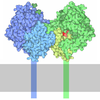

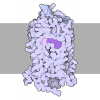
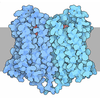



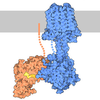




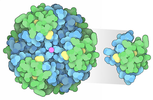


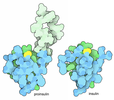
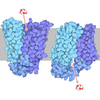



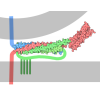
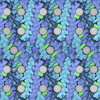
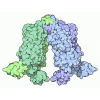
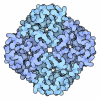
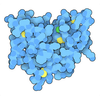




 Z (Sec.)
Z (Sec.) Y (Row.)
Y (Row.) X (Col.)
X (Col.)





































